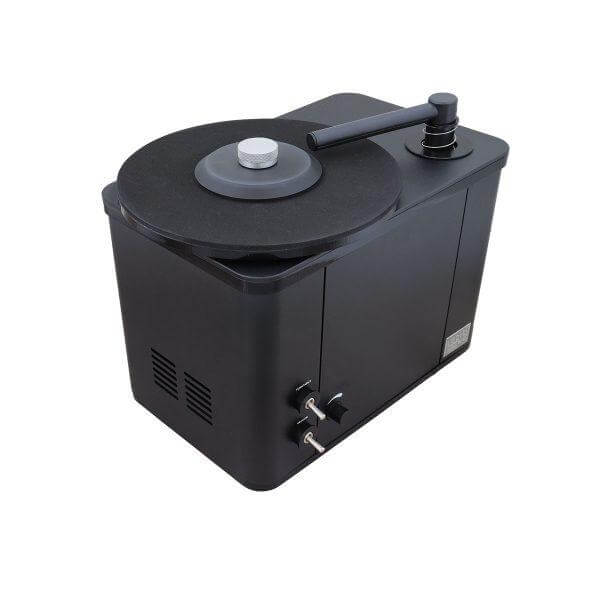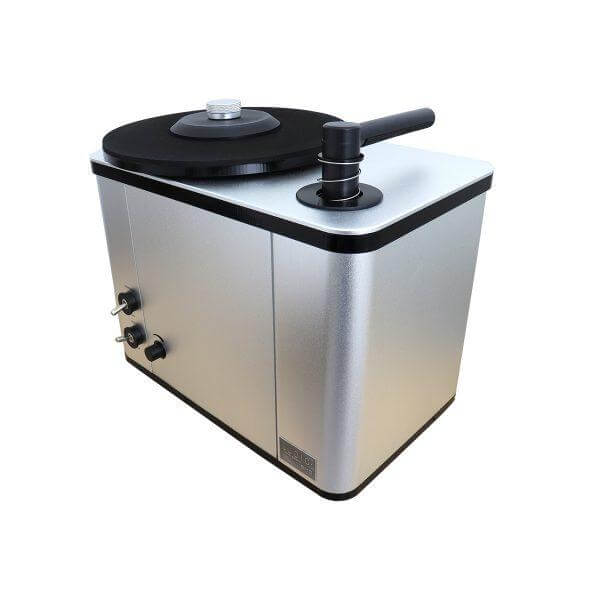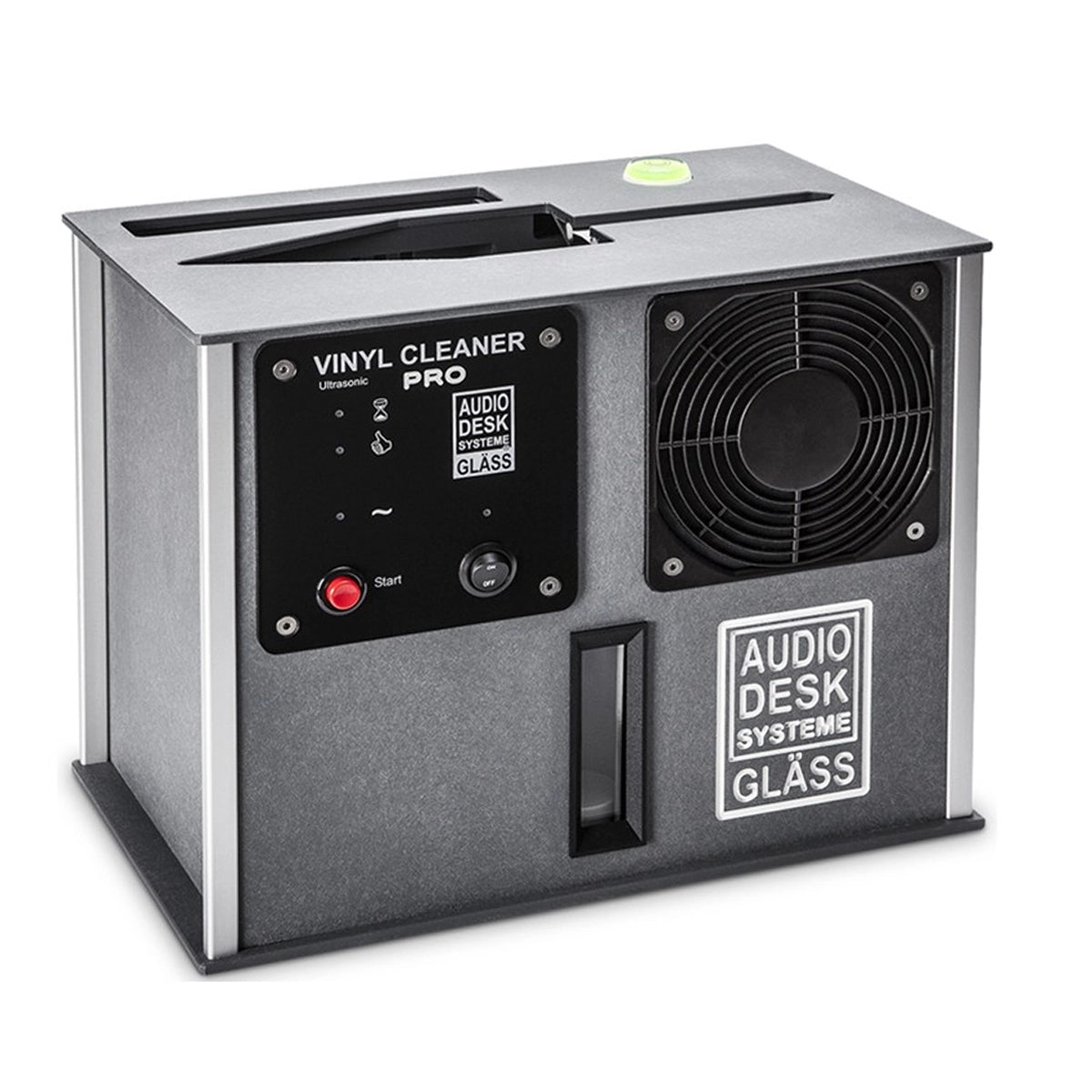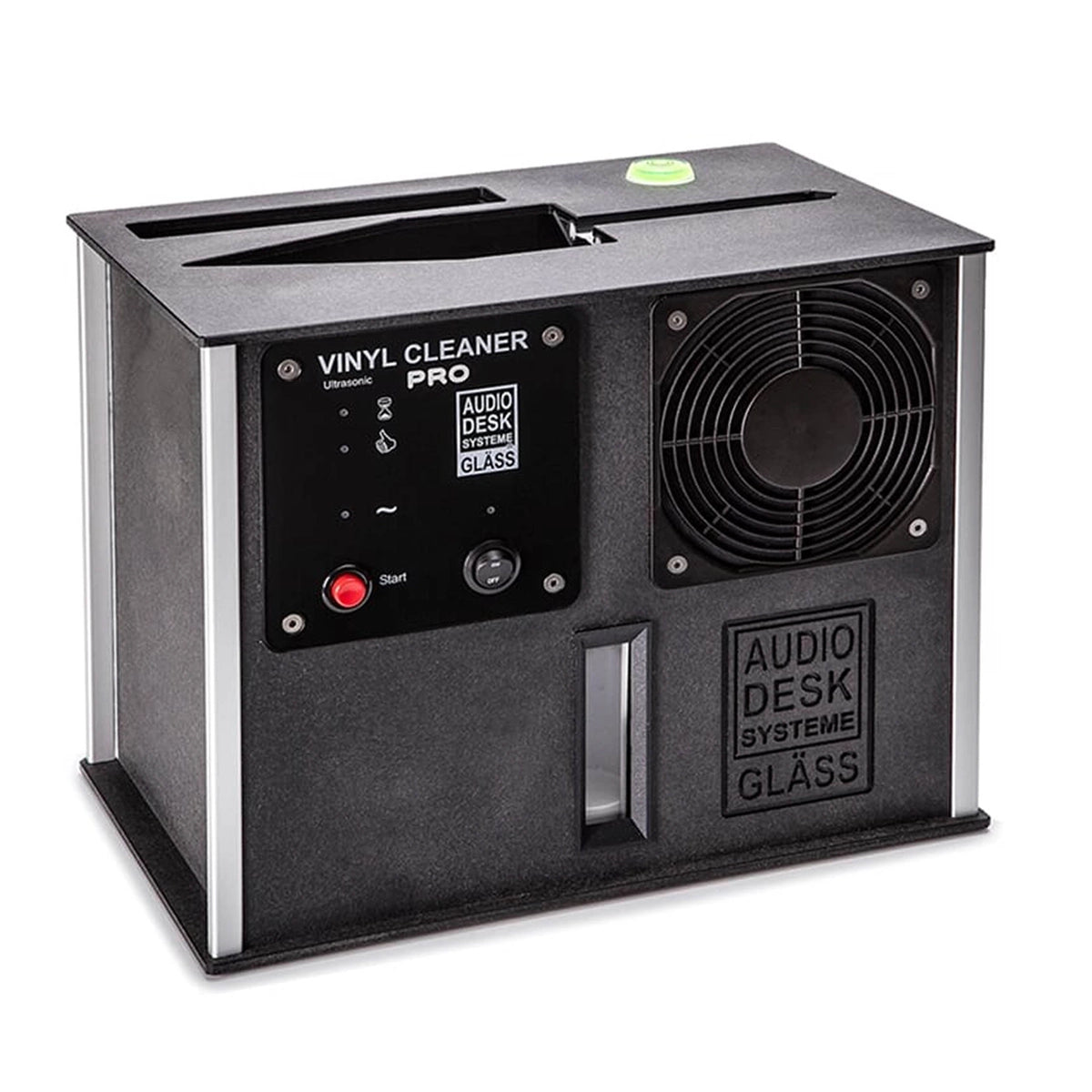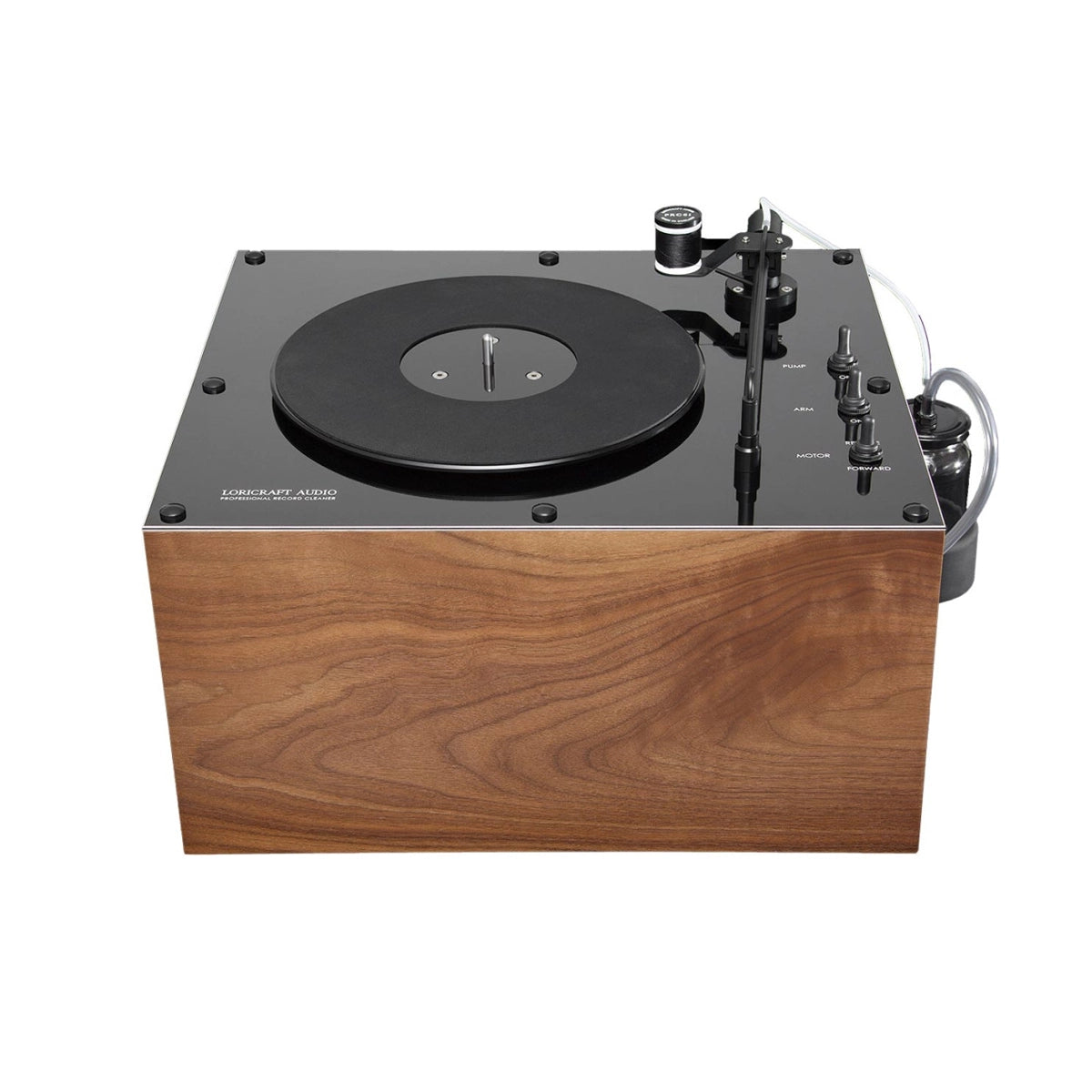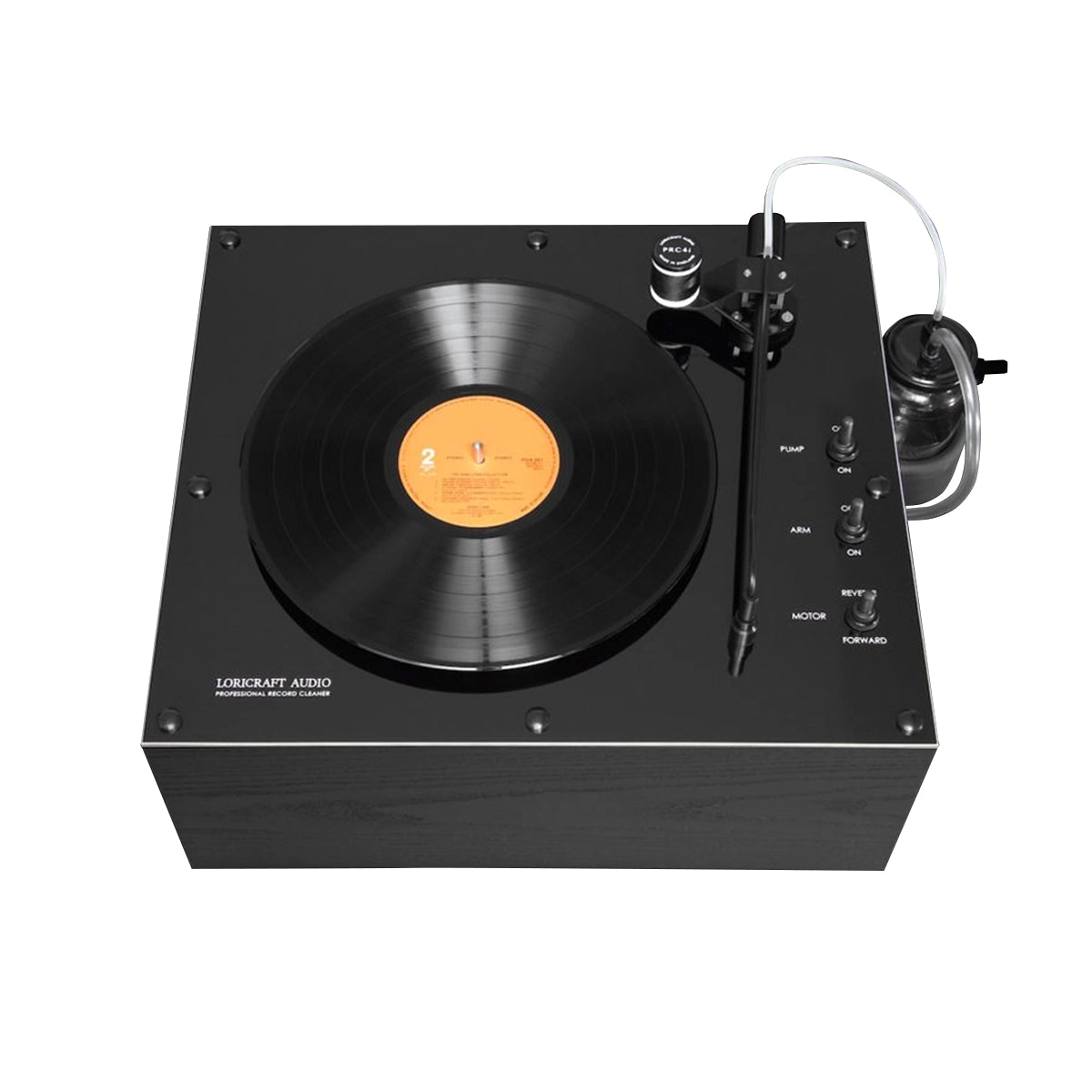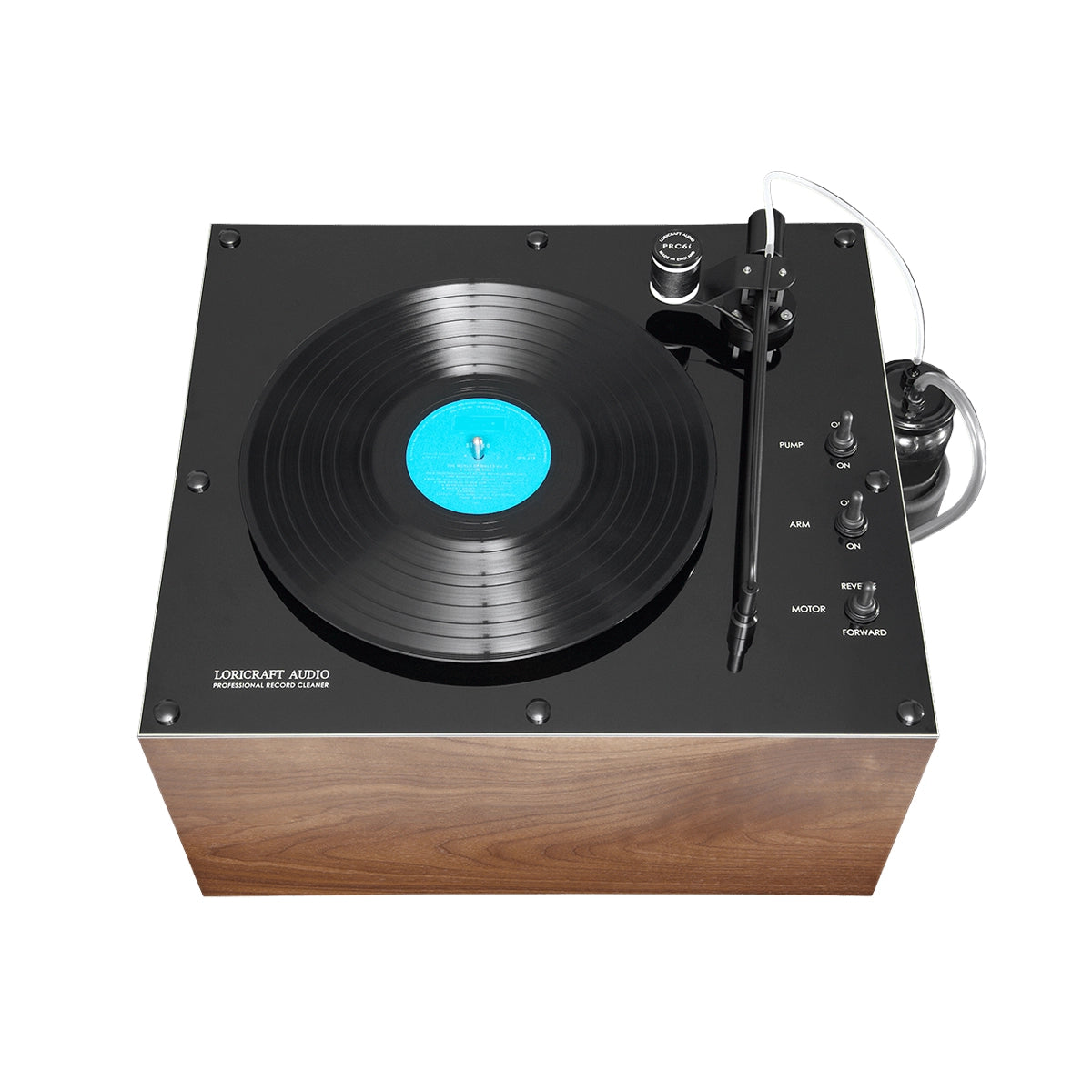Record Cleaning Machines
Record cleaning machines restore vinyl records to their original acoustic fidelity through advanced contamination removal processes that eliminate surface debris without damaging groove structures. These specialised devices solve the fundamental challenge of preserving analogue music collections by removing decades of accumulated dust, oils, and microscopic particles that degrade sound quality and accelerate record wear.
Premium Record Cleaning Machine Technologies
Record cleaning technologies represent the pinnacle of vinyl preservation science, combining mechanical precision with acoustic engineering to restore and maintain analogue recordings. These specialised systems employ distinct methodologies to remove contaminants whilst preserving the delicate groove structure that contains musical information.
Audiophile collections demand cleaning solutions that exceed conventional methods. Surface debris, microscopic particles, and organic residues accumulate in record grooves over decades, creating noise artefacts that mask the original recording quality. Advanced cleaning systems address these contamination layers through targeted mechanical action, ultrasonic energy, or precision vacuum extraction.
Professional restoration facilities rely on these technologies to recover damaged recordings and prepare archival materials. Museums, radio stations, and private collectors depend on consistent, repeatable cleaning results that won't introduce new damage to irreplaceable recordings.
Thread-Based Vacuum Systems
Thread-based vacuum cleaning technology utilises a continuous cotton thread that contacts the record surface at a single point whilst following the groove spiral. This Loricraft-developed approach removes debris through capillary action and vacuum extraction without applying lateral pressure across the groove walls.
Point-Contact Thread Methodology
The thread system advances continuously during the cleaning cycle, presenting fresh cotton fibre to each section of the record surface. Contaminated thread moves away from the cleaning area immediately after contact, preventing redistribution of removed particles. This single-point contact method minimises surface pressure whilst maintaining intimate contact with groove geometry.
Thread diameter and tension affect cleaning performance significantly. Thicker threads provide greater absorption capacity but may not penetrate narrow groove sections effectively. Thread tension determines contact pressure and influences the thread's ability to follow groove undulations accurately.
Precision Vacuum Extraction
Vacuum systems in thread-based cleaners operate at controlled suction levels to remove cleaning fluid and debris without creating excessive negative pressure. The vacuum pickup point positions directly behind the thread contact area, creating a continuous extraction zone that follows the cleaning action.
Vacuum strength calibration prevents record warping whilst ensuring complete fluid removal. Excessive suction can deform thin vinyl records, whilst insufficient vacuum leaves residual cleaning solution that attracts new contamination. Modern systems incorporate vacuum limiting valves and pressure monitoring to maintain optimal extraction parameters.
Groove-Following Technology
Thread-based systems track groove geometry through mechanical compliance rather than rigid positioning. The thread naturally follows groove undulations, eccentricities, and warpage that would challenge fixed cleaning apparatus. This adaptive tracking maintains consistent contact across the entire record surface without requiring complex servo mechanisms.
Record eccentricity creates varying linear velocities as the thread moves from inner to outer grooves. Thread advancement systems compensate for these velocity changes through differential gearing or electronic control, ensuring consistent thread presentation throughout the cleaning cycle.
Applications and Record Compatibility
Thread-based cleaning excels with fragile shellac recordings, acetate transcription discs, and damaged vinyl that can't withstand conventional brush contact. The minimal contact pressure makes this technology suitable for records with compromised structural integrity or valuable historical recordings.
Cleaning solution compatibility extends to enzyme-based formulations, surfactant solutions, and distilled water applications. The thread system doesn't require specific fluid viscosities, allowing technicians to select cleaning chemistries based on contamination type rather than equipment limitations.
Ultrasonic Cleaning Systems
Ultrasonic cleaning technology applies high-frequency acoustic energy to create cavitation bubbles in cleaning fluid that collapse against record surfaces, dislodging microscopic contaminants without mechanical contact. Audio Desk Systeme pioneered this approach for vinyl records through specialised transducer arrays and fluid management systems.
Multi-Frequency Ultrasonic Transducers
Ultrasonic transducers generate acoustic waves between 35-80 kHz, creating cavitation zones throughout the cleaning bath. Multiple frequency operation prevents standing wave patterns that create uneven cleaning action across the record surface. Lower frequencies penetrate deeper into groove structures, whilst higher frequencies provide surface cleaning action.
Transducer positioning around the record creates omnidirectional acoustic fields that reach all groove surfaces simultaneously. This surround-sound approach to cleaning ensures consistent energy delivery regardless of groove direction or surface irregularities.
Power density calculations determine optimal acoustic energy levels for different record materials. Vinyl formulations vary in hardness and temperature sensitivity, requiring acoustic energy adjustments to prevent surface damage whilst achieving thorough contamination removal.
Automatic Cleaning Cycles
Automated systems control cleaning duration, fluid temperature, and acoustic power throughout the cleaning process. Pre-programmed cycles adjust parameters based on contamination levels and record condition assessments. Heavy contamination requires longer exposure times and higher acoustic energy, whilst maintenance cleaning uses reduced parameters to prevent unnecessary stress.
Fluid circulation systems maintain cleaning solution effectiveness by filtering removed contaminants and maintaining optimal temperature ranges. Heated cleaning solutions improve cavitation efficiency and enhance chemical cleaning action, but temperature control prevents record deformation.
Integrated Drying Technology
Drying systems remove cleaning fluid through controlled air circulation and gentle heating elements. Fan-assisted drying prevents water spotting whilst avoiding rapid temperature changes that could stress record materials. Integrated drying eliminates handling between cleaning and drying stages, reducing contamination risk.
Air filtration systems prevent dust recontamination during the drying cycle. HEPA filtration captures airborne particles that could settle on wet record surfaces, negating the cleaning process effectiveness.
Water Filtration Technology
Filtration systems maintain cleaning solution purity through multi-stage particle removal and chemical purification. Ion exchange resins remove dissolved minerals that could deposit on record surfaces, whilst activated carbon filters eliminate organic compounds and odours.
Filtration monitoring indicates when cleaning solution replacement becomes necessary. Conductivity metres track dissolved particle concentrations, whilst turbidity sensors detect suspended contamination levels that compromise cleaning effectiveness.
Precision Vacuum Systems
Precision vacuum cleaning technology combines controlled suction with mechanical cleaning elements to remove debris and cleaning fluid from record grooves. Ludic Audio systems emphasise vacuum control precision and low-noise operation through engineered pump systems and acoustic dampening.
Variable Vacuum Control
Electronic vacuum control maintains consistent suction levels regardless of pump motor variations or system resistance changes. Vacuum sensors provide real-time feedback to control electronics that adjust pump speed and maintain preset suction parameters.
Vacuum strength affects cleaning fluid removal rates and mechanical stress on record materials. Variable control allows operators to optimise suction for different record thicknesses, vinyl formulations, and cleaning solution viscosities.
Precision-Engineered Components
Machined aluminium components provide dimensional stability and acoustic dampening compared to plastic assemblies. Precision manufacturing ensures consistent gaps between vacuum pickups and record surfaces, preventing suction variations that could affect cleaning uniformity.
Component tolerances influence vacuum distribution and cleaning effectiveness. Tight tolerances maintain consistent suction across the pickup width, whilst loose tolerances create uneven vacuum patterns that leave residual contamination.
Low-Noise Operation
Acoustic engineering reduces operational noise through pump isolation, ductwork design, and sound-absorbing materials. Quiet operation allows use in listening environments without disrupting other activities or creating acoustic fatigue during extended cleaning sessions.
Vacuum pump selection balances suction performance with noise generation. Rotary vane pumps provide high vacuum levels but generate more noise than diaphragm pumps, which offer quieter operation at reduced suction capacity.
Ergonomic Design Considerations
User interface design facilitates extended operation without fatigue. Control placement, record handling requirements, and cleaning sequence ergonomics affect operator efficiency and cleaning consistency.
Record clamping systems secure discs without over-tightening that could cause warpage or stress fractures. Quick-release mechanisms allow rapid record changes whilst maintaining secure positioning during cleaning cycles.
Record Cleaning Machine Technology Comparison
Thread-based systems excel at targeted contamination removal with minimal record contact, making them suitable for fragile or damaged recordings. Ultrasonic systems provide the most thorough contamination removal through cavitation action that reaches areas inaccessible to mechanical cleaning methods.
Precision vacuum systems offer the most operator control over cleaning parameters, allowing customisation for specific contamination types or record conditions. This flexibility comes at the cost of reduced automation compared to ultrasonic systems.
Selection Criteria by Collection Size
Personal collections under 500 records benefit from compact ultrasonic systems that provide thorough cleaning with minimal operator involvement. The automated operation suits occasional use patterns whilst delivering consistent results across different record conditions.
Enthusiast collections between 500-2000 records require systems that balance cleaning thoroughness with operational efficiency. Thread-based systems provide superior cleaning quality for this range whilst maintaining reasonable processing times for regular cleaning routines.
Large collections exceeding 2000 records demand systems optimised for continuous operation and processing efficiency. Industrial-grade ultrasonic systems or multiple precision vacuum units provide the throughput necessary for extensive record libraries.
Contamination-Specific Applications
Light surface dust responds well to precision vacuum systems with appropriate cleaning solutions. The controlled suction removes loose particles without requiring aggressive mechanical action that could embed debris deeper into grooves.
Organic contamination including fingerprints, mould, and biological residues requires ultrasonic treatment for complete removal. Cavitation action breaks molecular bonds in organic films that resist mechanical cleaning methods.
Deep-seated contamination from decades of accumulation demands thread-based cleaning that can selectively target embedded particles. The point-contact method applies concentrated cleaning action to specific contaminated areas without affecting clean groove sections.
Performance Optimisation Strategies
Cleaning solution selection affects all system types but requires different considerations for each technology. Thread-based systems work with various fluid viscosities, whilst ultrasonic systems require specific acoustic impedance matching for optimal cavitation.
Operating temperature influences cleaning effectiveness across all technologies. Elevated temperatures improve chemical cleaning action but must remain below record deformation thresholds. Temperature monitoring prevents thermal damage whilst maximising contamination removal.
Cleaning sequence optimisation reduces processing time whilst maintaining quality. Pre-cleaning with antistatic solutions improves subsequent cleaning effectiveness by reducing particle adhesion forces.
Maintenance Requirements by Technology
Thread-based systems require regular thread replacement and vacuum system maintenance. Thread quality affects cleaning performance, making consistent supply sourcing crucial for reliable operation.
Ultrasonic systems need periodic transducer inspection and cleaning solution management. Transducer efficiency decreases with contamination buildup, requiring scheduled cleaning to maintain acoustic output.
Precision vacuum systems demand pump maintenance and component cleaning to prevent suction degradation. Vacuum pump oil changes and filter replacements maintain optimal performance throughout extended operation periods.
4 products

